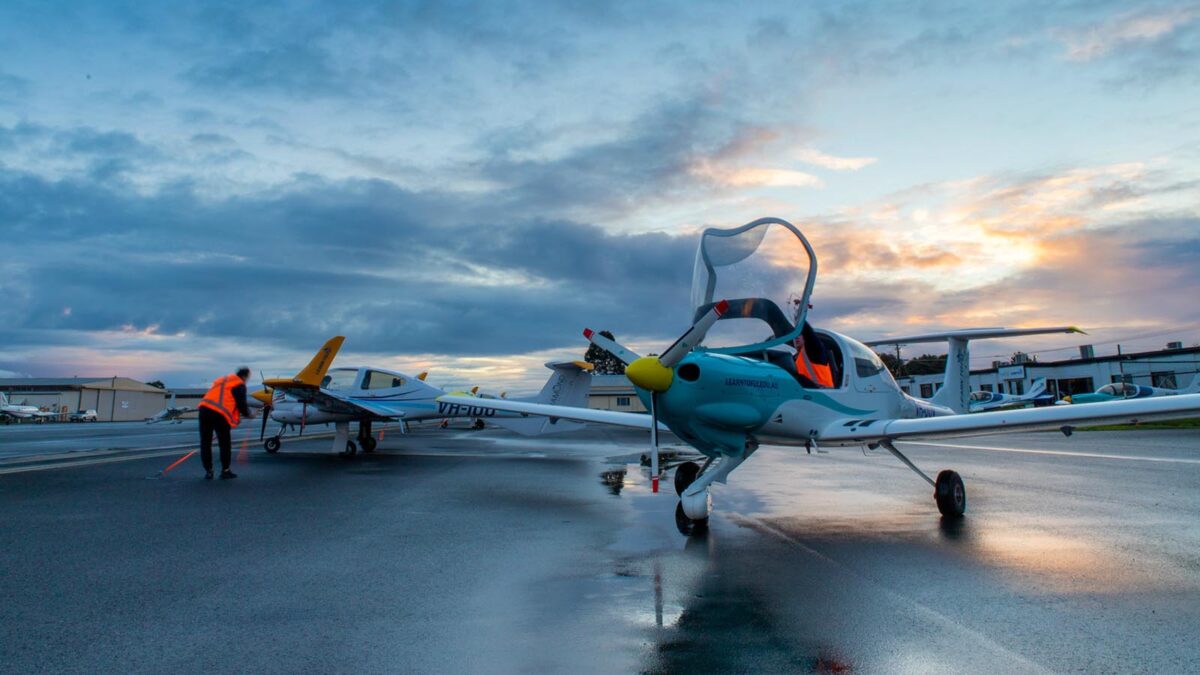Embarking on a career as a pilot is pursued by many, and for those looking to study in Australia, cadetship programs offered by major airlines present a structured pathway to turn this dream into reality. Looking at the intricacies of cadetship programs in Australian airlines and the application processes, training structures, and overall cadetship experience will help prepare those looking to work in aviation on what to expect. Additionally, we will explore the opportunities presented by direct-entry pilot programs, providing aspiring aviators with a comprehensive overview of their journey from the classroom to the cockpit.
The cadetship advantage
Australian airlines have long recognised the value of cultivating their own pool of skilled and qualified pilots through airline cadet programs. These programs, often designed in collaboration with aviation training institutions, offer a streamlined and comprehensive approach to pilot training.
Application Process: Securing a spot in an airline cadetship program is a competitive process, typically involving stringent selection criteria. While requirements may vary between airlines, common prerequisites include a high school diploma, aptitude tests, and often a formal interview. Demonstrating a passion for aviation and a commitment to the rigorous training ahead can set candidates apart.
Training Structure: Once accepted into a cadetship program, aspiring pilots embark on a structured training journey that seamlessly integrates theoretical knowledge with hands-on flying experience. The curriculum typically covers a range of subjects, including aviation law, navigation, meteorology, and aircraft systems. Practical flight training is conducted in state-of-the-art simulators and actual aircraft, preparing cadets for the challenges of real-world flying.
Financial Considerations: While cadetship programs provide a direct pathway to a career as an airline pilot, they often come with associated costs. It’s crucial for aspiring aviators to carefully consider the financial implications and explore potential avenues for financial assistance, scholarships, or sponsorships that may be available.
Navigating direct entry opportunities
While cadetship programs are a popular route into the cockpit, direct entry pilot opportunities provide an alternative pathway for individuals who have pursued aviation training independently or gained flying experience through other avenues.
Qualifications and Experience: Direct entry pilots typically enter the airline with a Commercial Pilot License (CPL) and, in some cases, an Airline Transport Pilot License (ATPL). Accumulating flight hours through roles such as flight instruction, charter operations, or regional flying can enhance a candidate’s competitiveness.
Application Process: Direct entry opportunities involve a competitive application process, similar to cadetship programs. Airlines seek candidates with a combination of relevant qualifications, flying experience, and a demonstrated commitment to safety and professionalism. Successful applicants undergo a tailored transition program to familiarise themselves with the specific aircraft and operational procedures of the airline.
Career Progression: Direct entry pilots often find themselves on an accelerated career trajectory, leveraging their existing experience to assume roles with greater responsibilities within the airline. This pathway is well-suited for those who have already amassed substantial flying experience and are ready to take on the challenges of flying for a major airline.
Nurturing future aviators: An industry commitment
Australian airlines recognise the pivotal role they play in supporting the next generation of aviators. Beyond the structured training programs, these airlines often foster a culture of continuous learning and development, providing ongoing training and mentorship to support the professional growth of their pilots.
Mentorship Programs: Many cadetship programs and airlines offering direct entry opportunities incorporate mentorship programs into their framework. Experienced pilots, often with extensive careers in the airline, guide and support the development of aspiring aviators. This mentorship aspect not only enhances technical skills but also imparts invaluable insights into the nuances of the aviation industry.
Technology Integration: Advancements in aviation technology continually shape the training landscape. Airlines are quick to integrate the latest technologies, such as advanced flight simulators and digital training tools, into their programs. This commitment ensures that future aviators are equipped with the skills and familiarity needed to operate the latest aircraft safely and efficiently.
The role of education in aviation aspirations
Aspiring aviators looking to join cadetship programs or explore direct entry opportunities often begin their journey with a solid education foundation. Pursuing aviation courses in Melbourne or other recognised institutions specialising in pilot training lays the groundwork for success in the competitive aviation industry.
Aviation Courses in Melbourne: Melbourne, a hub for aviation education in Australia, hosts institutions that offer a range of aviation courses, from private pilot licenses to advanced flight training programs. These courses provide a comprehensive understanding of aviation principles and lay the groundwork for individuals aspiring to join the ranks of airline pilots.
Soaring to new heights
Whether through cadetship programs or direct entry opportunities, the journey from the classroom to the cockpit is a process that demands dedication, passion, and a commitment to excellence. Australian airlines, recognising the potential within each aspiring aviator, continue to invest in programs that not only shape the skills of future pilots but also contribute to the vibrancy and safety of the aviation industry. Supported by cadet programs, the next generation of aviators will take flight, guided by the principles instilled through comprehensive training and education.


